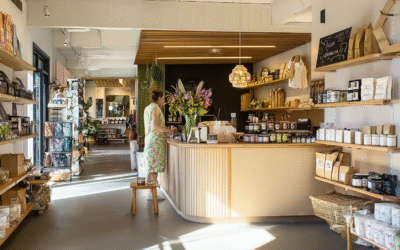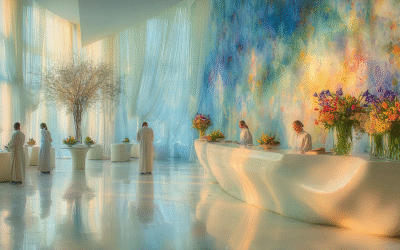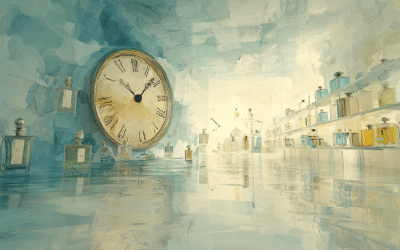Fred Perry’s new store opened in Moscow, designed by masamichi katayama at wonderwall. As with each of the brand’s Laurel stores, the interior reflects the culture & history of the city. In the Moscow store this is featured through two seperate and contrasting spaces – a clean modern front area and a more informal boudoir with vintage rugs and furniture in the back.
Inspired by the “hidden” space few steps down from behind a large hall with a ceiling over four-meters high, the boutique was designed based on Katayama’s imagery that it had been transformed from a recently-discovered well-preserved secret salon where the youths of gentle birth used to gather in the former Soviet Union era. The space is composed by introducing the contrast between the more traditional bricks and tapestry featuring regional designs from around Russia and the more modern materials such as stainless steel.
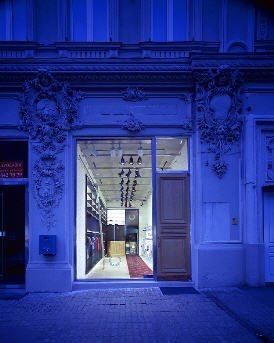 It starts with an exterior which shows no real hint of the full nature of the store inside.
It starts with an exterior which shows no real hint of the full nature of the store inside.
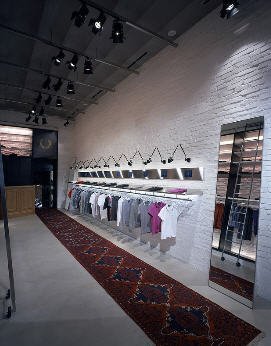 A long thin salon with very sparcely racked clothes, austere concrete floor and sparing use of a single floor runner.
A long thin salon with very sparcely racked clothes, austere concrete floor and sparing use of a single floor runner.
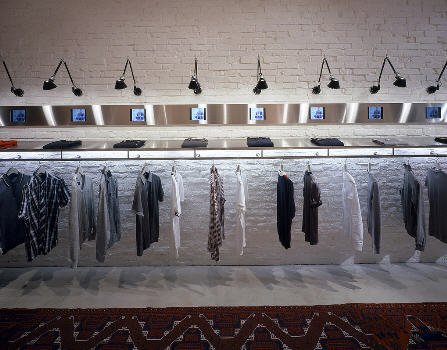
A notable innovation in the merchandising approach is the use of monitors on the racks below the miniature lighting.
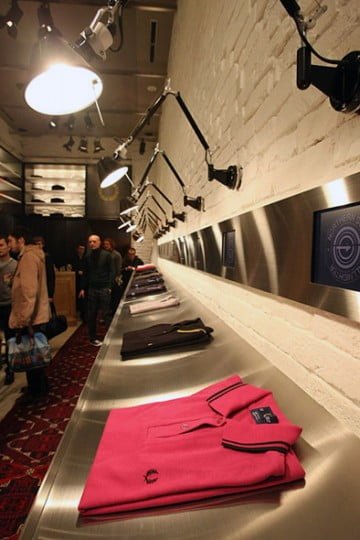 Folded Tshirts displayed above racked clothes – all in singles with information about the product on the digital screen above each item.
Folded Tshirts displayed above racked clothes – all in singles with information about the product on the digital screen above each item.
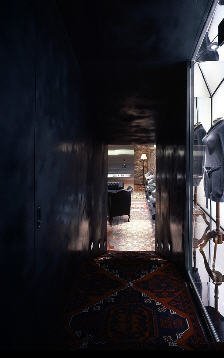 Moving further through the front area you see a glimpse of something beyond as the floor runner doesn’t end ….. a secret area
Moving further through the front area you see a glimpse of something beyond as the floor runner doesn’t end ….. a secret area
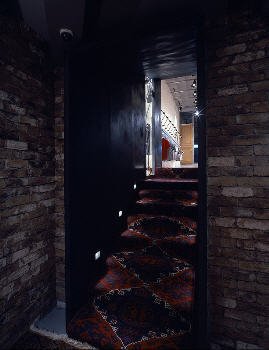 Rustic unfinished brick & narrow stairs down into the secret salon at the rear.
Rustic unfinished brick & narrow stairs down into the secret salon at the rear.
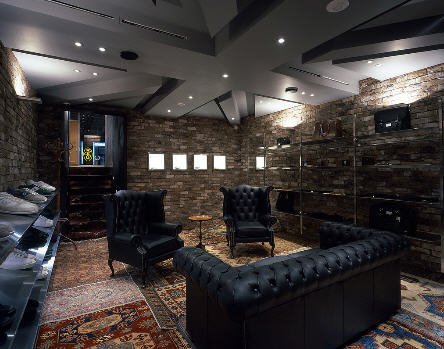 The Secret Salon.
The Secret Salon.
Luxurious leather chairs
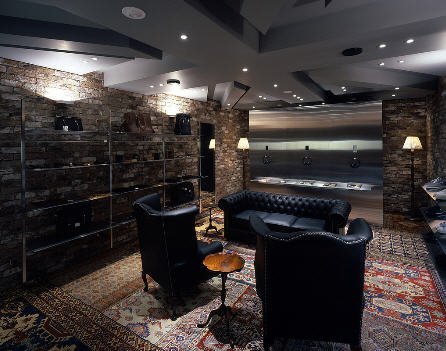 An Ipod dock wall for sampling
An Ipod dock wall for sampling
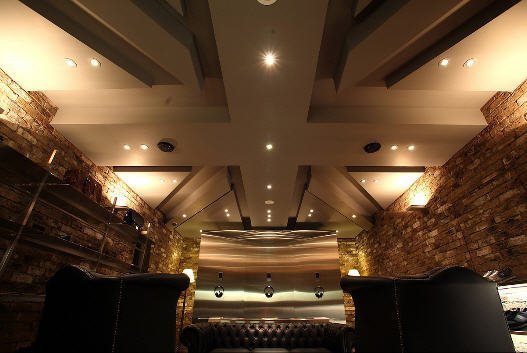 Union Jack ceiling indicating the heritage of the brand
Union Jack ceiling indicating the heritage of the brand
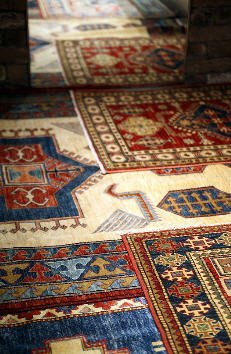 The floor is covered with multiple layers of rugs from different ethnic groups within Russia.
The floor is covered with multiple layers of rugs from different ethnic groups within Russia.
![Reblog this post [with Zemanta]](http://img.zemanta.com/reblog_e.png?x-id=1ef5d47d-271e-4560-b2df-b36feebc9c96)
